Poppy. Survival guide. Part 2
- Transfer
Here is the second part of a great translated article by Michel Delio. If you haven’t read it yet, you can check out the first part of the Survival Guide on these scary apple computers.
The article has many links to paid programs, which many will regard as advertising. I thought for a long time what to do with them, and decided to leave, but I also tried to talk about possible free alternatives. Hereinafter, my comments are in italics. So, let's get down to our disasters.
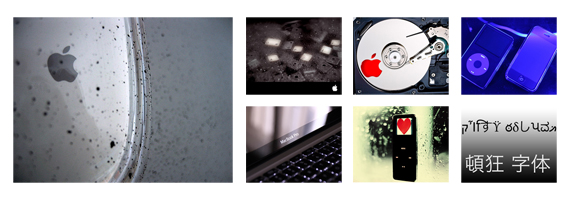
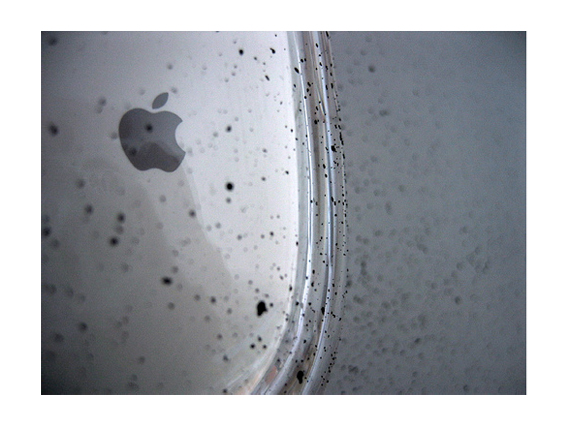
SURVIVAL TACTICS: Over time, white macbooks tend to get dirty (especially in the area under the wrists), and every touch is visible on the black case, which is very suitable for fingerprinting, but it looks unattractive. However, you can restore your MacBook to its original appearance with Mr. Clean Magic Eraser . You need a simple sponge, not one that foams if wet. In the United States, they can be found in almost any grocery store or pharmacy for about $ 3.50 per pair.
To get started, wipe the MacBook with a clean, lint-free cloth or microfiber. Wet Magic Eraser, a wonderful sponge under a thin stream of tap water and squeeze it until it becomes slightly damp. Wipe your macbook with a sponge, moving it in one direction, and not in different directions. Stay away from the keyboard and all ports or other openings. When finished, wipe the computer dry with any other lint-free cloth. If there is even the slightest chance that at least a drop of water has entered the machine, leave it turned off, unplugged for six hours, before you turn it on again.
All this is too complicated. For example, I would not like to be left without a laptop for six hours just because it got so dirty that I had to wash it first and then dry it. Therefore, it is better to turn it off once a week, or as it becomes dirty, wipe it off from dust and prevent it from getting dirty. In addition, there are wonderful remedies: the wonderful GelaSkin ($ 29.95) can be glued to the top cover for every taste, and the area under the wrists can be protected with the Moshi Palmguard (costs from $ 20.00 to $ 28.00 depending on the model of laptop). At the same time, the laptop looks beautiful and unusual, the case is protected from dirt, and the plastic is intact. I have been using it both for several months already and am very pleased.

SURVIVAL TACTICS:If you somehow managed to move the key from its place on the keyboard, be it an old Apple keyboard, a third-party keyboard, or the new aluminum keyboard that now comes with the new iMac and Mac Pro, you can't just insert it back. Turn the key over and see if a small plastic leg is attached to it. If the foot is attached and not broken, carefully remove this plastic tip from the key and attach it back to the keyboard. To do this, fix it under the “eye” on the right, and then insert two small plastic hooks into the connectors on the left. Now you need to insert the key cap on the top ears of the stand; You might want to use a toothpick or other small object so that the gimbal does not move when you attach the key back.
It’s hard to describe in words, so I advise you to watch a detailed video on YouTube on how to do it right.
Note for users of the new aluminum keyboard: non-letter keys and numeric keys are more difficult to insert back, because the loop that stabilizes them is made of soft metal, which is very easy to bend incorrectly if you handle it not very carefully.
If you break a plastic leg on a keycap, you can almost always find people on the net who sell keycaps and replacement legs.
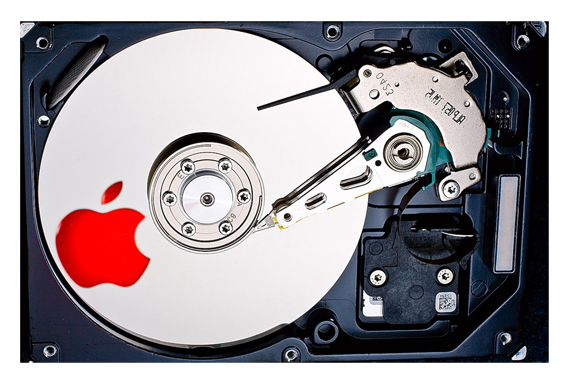
SURVIVAL TACTICS: If suddenly you start to hear ominous sounds coming from your Mac, it can be anything: from high-frequency sobbing to rare deaf sounds, like from a blow coming from the area of a hard disk, you can assume that your hard the disk stood on the path of death. Among other symptoms, it is worth noting the frequent freezing of applications, regular system freezes at boot, files that disappear mysteriously, slowing down the saving or opening of files. A dying hard drive can only be replaced. There is no other way to repair it, so as soon as you notice such symptoms, immediately backup your files, even if the Disk Utility reports that the hard disk is in order.
You can assume that you are lucky if your hard drive was so kind that it warned you of an impending demise. In some cases, the only warning you will receive is when the machine simply refuses to work, after which you will see a folder icon with a question mark at the next reboot. All hard drives die sooner or later, so don't be lazy and make backups.
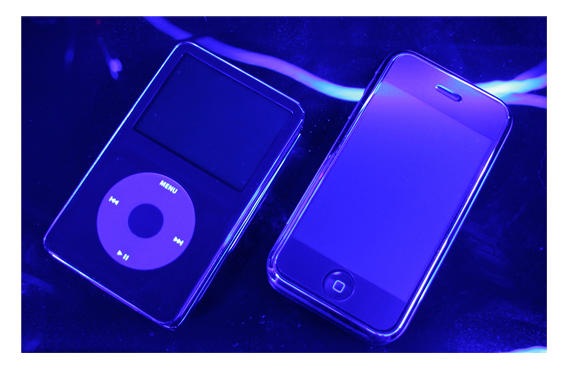
SURVIVAL TACTICS: Some people are strongly advised to use toothpaste to remove scratches from the tempered glass touchscreen of your iPod or iPhone. A soft abrasive in the paste designed to whiten your teeth can also remove scratches from iPod / iPhone screens. While toothpaste is generally very suitable for cleaning jewelry, some brands of paste can still be too harsh for iPod / iPhone screens. It’s safer to use products that are designed to do the job: Applesauce polish ($ 19.95) or Ice Cremefrom RadTech ($ 20.95 - $ 25.95). With these products and some effort, you can remove small scratches and scuffs from the face of your devices. Just remember to carefully follow the manufacturer's recommendations, especially regarding movements in different directions: you can add new ones instead of removing scratches.
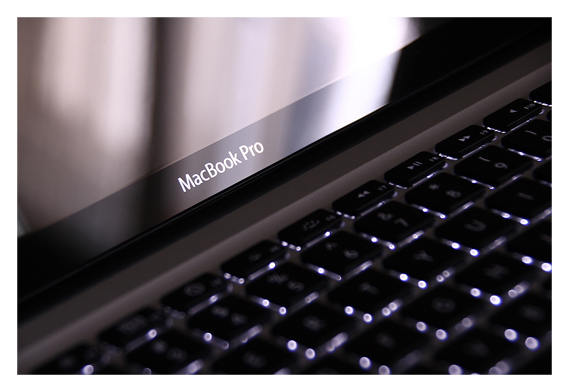
SURVIVAL TACTICS:If the screen of your MacBook is scratched, do not try to repair it yourself. Any tool strong enough to remove scratches will also remove the upper protective coating on the screen. We heard that some people attributed the screen to a jeweler to remove scratches or apply a little Vaseline to the crack to mask it, but we cannot recommend that you do this. If a scratch seriously bothers you or interferes with working with most of the display, the best option is to replace the entire screen. It is likely that the standard warranty or AppleCare will not cover this repair, as it is most likely that the appearance of scratches is classified as accidental damage due to the fault of the owner. In the Apple service center, you will be replaced not only with the screen, but with the entire top of the laptop (the screen itself, the border, the top cover), which will cost about $ 800. In addition, there are companies in the United States that are engaged in the replacement of displays on macbooks, they are doing it somewhat cheaper than at an Apple service center, and provide a 1-year warranty. Their services will cost you less, because they replace only the screen itself. The rim and top cover remain from your MacBook. Repair cost excluding delivery is $ 350 - $ 500, depending on the size of the display.However, I heard not very flattering about their work, for example, from Paul Stamatiou ( Paul Stamatiou ), which thus replaced the screen in the MacBook Air.
If you are a jack of all trades and are not afraid to make a replacement yourself, you can order a new screen, for example, in PowerBook Medic , and install it yourself. Excluding delivery, a spare part costs $ 198.95 - $ 299.95 depending on screen size. You are also provided with a one year warranty. Delivery to Russia or Ukraine will cost $ 28.00 - $ 87.79 depending on the postal service.
If you carry out repairs in a service center in Russia, the spare part will also cost $ 750 - $ 800, plus about 2000 rubles for the work of technicians. So it’s better not to scratch the display, although repairs will be cheaper than buying a new MacBook.

SURVIVAL TACTICS:So, you dropped your iPod or iPhone into water or a container of water (bathroom, toilet, deep puddle, ocean). If the technology gods favor you, you can fix it. Take your unfortunate device out of the water and turn it off immediately if it was turned on during the dive. Although in this case, we offer our condolences, since most likely your iPod or iPhone has already died. If the device fell into the water when it was turned off, your first goal is to completely dry it. To simplify the task, it can be located near the fan of the cable TV unit or air conditioner. Or you can immerse it in a deep bowl with dry processed rice or in a container with several bags of silicon dioxide (these are such small moisture-absorbing bags that can usually be found in bag packages,
If the device has absorbed a lot of liquid, place it vertically so that, as the water drains, it does not appear to be lying in a puddle. In addition, the bathed iPod or iPhone can be placed on any surface that absorbs moisture, such as a stack of paper towels or cloth towels. In this case, do not forget to wipe the leaked water and change towels as necessary. If you know how to open the device case (the pick / plectrum will help you with this - a small plate that the strings on the guitar are sorted through), open it and remove the battery to simplify the drying process. This, of course, voids the warranty, but in such a critical situation all means are good for saving the device.Although if you drop your iPod or iPhone in water, under warranty you will not be repaired in any way. It is impossible to hide this fact, since immersion sensors are integrated in them, which change color upon contact with water. Let the device dry for three days, then try turning it on. If it doesn’t work, let it dry for another two days. Depending on what kind of liquid your iPod or iPhone has fallen into, you may need to open it and clean it with denatured alcohol to remove any residue that may cause further problems.

SURVIVAL TACTICS: So that you do not have to read too much text in italics, I only note that this point has been largely corrected, supplemented, and almost completely rewritten. Therefore, do not be surprised that it is a little inconsistent with what is written in the original article.
Tiny font files can cause huge trouble. Damaged fonts can cause problems with printing or displaying information, and even cause applications to crash. Clutter in font caches can also cause all kinds of problems with the reproduction of information on the screen. Therefore, fonts on the Mac must be handled very delicately. In no case should you touch the system fonts. If you accidentally uninstall Lucida Grande, Mac OS will not load at all.
Use tipsT2 blog to solve the problem.
1. Checking the fonts. In Mac OS X (Tiger or Leopard), damaged fonts can be detected by going to the Applications folder and launching Fonts (Font Book) . Hold down the Command (⌘) key and select the fonts at risk. It may include fonts that you recently bought or downloaded for free from untrustworthy sites. For the first time, you can select all fonts by pressing Command + A or (⌘ + A) . Next, select File> Validate Fonts from the menu . If the font is damaged, you will see a round red icon with a cross inside. Check the boxes for bad fonts (click on the checkboxes next to their names) and clickRemove Checked to save your system from evil. If you see a yellow warning icon next to the font, it may be causing trouble too, so remove it from the font folder. At the end of the procedure, restart the computer and see if the problem is solved in this way. If you are using a previous version of Mac OS X (10.3 or lower), you will have to manually test the font groups of the pieces 5 at a time to find which one is causing the problem.
2. Clear the font caches.Font caches can be a real problem for Mac OS X users. When fonts are activated, they are cached for use. Some font caches are handled by the OS itself; other font caches are controlled by applications. In any case, it is very easy to damage individual cache files, as a result of which the fonts are distorted and the information on the screen is displayed incorrectly. The free FontNuke application (3.8 MB) will help you cope with the problem . It deletes the system font caches (Mac OS X font cache files), as well as the font caches of the Adobe, Microsoft Office, and Quark Express applications. Before starting this utility, save all documents and exit all programs, because after clearing the font cache you will need to reboot the system.
If you have extra $ 100 and you don’t know how else to spend it, you can purchase one of the paid font organizing apps : Extensis Suitcase Fusion 2 ($ 99.95, 31.3 MB) or Insider Software's FontAgent Pro 4 ($ 99.95, 15.1 MB). Both applications offer many options for organizing and working with fonts, and both applications have a 30-day free trial. Extensis also offers paid font solutions for both Mac and Windows. A little cheaper (for $ 69.95 or for free when buying Extensis Suitcase Fusion 2) you can buy the FontDoctor application (7 MB), which will help fix problems with fonts and font caches.
3. Move the fonts of your account to a temporary directory. Come in pack/ ~ / Libraries / Fonts (/ ~ / Library / Fonts) , where ~ is the name of your account, and move the files from there to a temporary folder on the desktop. Do not delete these fonts, just move. Make sure that there are no fonts left in the / ~ / Library / Fonts folder and reload the system.
4. Move the fonts that came with your OS to this directory. After rebooting, font problems should disappear. However, on your desktop there is still a folder with the fonts that were installed in your account. Move them one by one to the / ~ / Libraries / Fonts folder to find out which font is causing problems. Move important fonts first.
5. If nothing helps, in search of useful tips, you can read Kurt Lang’s long, lengthy article, “Font Management in OS X” (PDF).
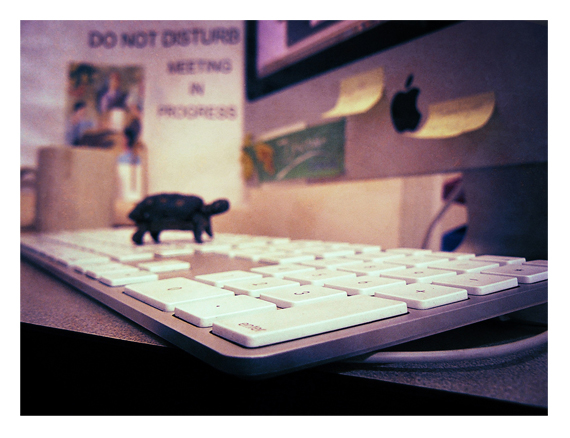
SURVIVAL TACTICS: If Safari does not move at the speed of a quick-footed fallow deer, get rid of all the data that it is burdened with by clicking Safari> Reset Safari (Reset Safari) . This will allow you to delete saved logins and passwords, favicons, clear cache, history and cookies. If you do a full reset, there is a chance that your browser’s performance will increase significantly. However, you will have to enter a username and password on all sites that usually “remember you”. Therefore, if you doubt that you can remember all your logins and passwords for accessing web resources, try to delete everything first, except for the stored names and passwords (stored login info) and cookies (cookies), to see if this speeds up the work Safari.
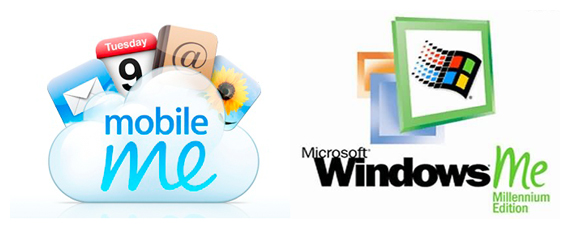
SURVIVAL TACTICS: MobileMe is experiencing many troubles, including interruptions in operation, problems with synchronization, and so on (to prove that even Apple can produce products with serious shortcomings). Let's say you want to continue to use a service that Apple itself found to be defective. In this case, backup all the data that you are going to synchronize with the cloud, and then try to reset iSync. Go to System Preferences> MobileMe and click Reset Sync Data . Select All data in the pop-up menu.unless you are experiencing problems with a certain type of information. If so, select only the data whose synchronization you are experiencing problems with. By clicking on the right arrow, you should see the following text: “On MobileMe when syncing with this computer” (“On MobileMe with sync info from this computer”) .
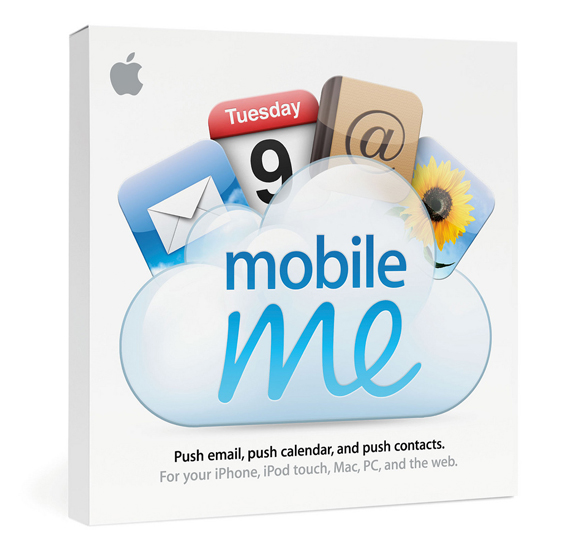
SURVIVAL TACTICS: If Tip # 16 doesn’t fix the problem, or if you receive error notifications regarding inconsistencies in data, reset the Sync Services folder . To do this, go to Settings in the iSync menu and click Reset Sync History.. If you have multiple Macs, you may need to do this on all computers that sync with MobileMe. Start with the machine with the latest information. It is likely that you will need to reset the synchronization service folders on each computer. Just do not forget to make sure that you back up the data before you reset the synchronization, as it is likely that they will be overwritten or deleted.
God saves man, who save himself. It is much easier to prevent problems before they appear than to fix them when they occur. Here are five ways to reduce the chances of one of the 17 disasters falling on you.
1. Avoid liquids. Keep drinks as far away as possible from electrical appliances. Make it your rule not to drink at the computer and never break it. The same goes for any water related activity: it’s better to leave the device at home, or buy a waterproof case for it.
2. Update regularly.Mac owners may be tired of updating software, as they are not affected by many PC viruses / spyware / hacker attacks. Nevertheless, Apple’s software also has security holes, so it’s very important to put patches on your machine. The same goes for solving problems from third-party suppliers. Even if patches are not aimed at resolving security issues, they still make the programs more stable and efficient. To make sure your Mac is equipped with the latest software, go to the Apple menu (), select Software Update , click the Check now button , select the items you want to download, and click Install (Install) .In my case, just click on Software Update and the scan will start automatically. Restart your computer and repeat the indicated procedure, as some software updates will be available only if other updates are already installed. To keep your other applications in shape, check the manufacturer’s website once a month to check for updates.
Good advice, but obviously not our way. Firstly, when installing new programs, the settings usually have the Check for updates item. Moreover, you can select the option so that the program automatically checks for updates at startup or with a certain frequency (once a day or week). Secondly, there is a wonderful free AppFresh application(1.6 MB), which will monitor itself so that you have the latest versions of programs, widgets, settings panels and application plugins installed.
3. Observe safety requirements. Security always requires concessions on the part of usability, but it's worth your while to protect your data from prying eyes. Do not allow to log into your account automatically and set up password protection for key files by changing the Accounts settings in System Preferences .
4. Keep clean.Please your poppy with monthly cleaning inside and out. This is easy: blow out the dirt from its entrails (see point # 5), restore disk permissions, delete or archive old files. The less cluttered your hard drive is, the more efficient it is. Do not forget to clean your desktop of everything that does not belong there, and run those UNIX scripts (see point # 4).
5. Make a backup. Just do it, okay? We will buy you a pony (I always wanted a little horse :-)). Backing up your data is the single most important thing you can do so that you and your priceless files can survive any technological trauma.
The article has many links to paid programs, which many will regard as advertising. I thought for a long time what to do with them, and decided to leave, but I also tried to talk about possible free alternatives. Hereinafter, my comments are in italics. So, let's get down to our disasters.

Disaster 8: MacBook gets dirty

SURVIVAL TACTICS: Over time, white macbooks tend to get dirty (especially in the area under the wrists), and every touch is visible on the black case, which is very suitable for fingerprinting, but it looks unattractive. However, you can restore your MacBook to its original appearance with Mr. Clean Magic Eraser . You need a simple sponge, not one that foams if wet. In the United States, they can be found in almost any grocery store or pharmacy for about $ 3.50 per pair.
To get started, wipe the MacBook with a clean, lint-free cloth or microfiber. Wet Magic Eraser, a wonderful sponge under a thin stream of tap water and squeeze it until it becomes slightly damp. Wipe your macbook with a sponge, moving it in one direction, and not in different directions. Stay away from the keyboard and all ports or other openings. When finished, wipe the computer dry with any other lint-free cloth. If there is even the slightest chance that at least a drop of water has entered the machine, leave it turned off, unplugged for six hours, before you turn it on again.
All this is too complicated. For example, I would not like to be left without a laptop for six hours just because it got so dirty that I had to wash it first and then dry it. Therefore, it is better to turn it off once a week, or as it becomes dirty, wipe it off from dust and prevent it from getting dirty. In addition, there are wonderful remedies: the wonderful GelaSkin ($ 29.95) can be glued to the top cover for every taste, and the area under the wrists can be protected with the Moshi Palmguard (costs from $ 20.00 to $ 28.00 depending on the model of laptop). At the same time, the laptop looks beautiful and unusual, the case is protected from dirt, and the plastic is intact. I have been using it both for several months already and am very pleased.
Disaster 9: Keys Break Free

SURVIVAL TACTICS:If you somehow managed to move the key from its place on the keyboard, be it an old Apple keyboard, a third-party keyboard, or the new aluminum keyboard that now comes with the new iMac and Mac Pro, you can't just insert it back. Turn the key over and see if a small plastic leg is attached to it. If the foot is attached and not broken, carefully remove this plastic tip from the key and attach it back to the keyboard. To do this, fix it under the “eye” on the right, and then insert two small plastic hooks into the connectors on the left. Now you need to insert the key cap on the top ears of the stand; You might want to use a toothpick or other small object so that the gimbal does not move when you attach the key back.
It’s hard to describe in words, so I advise you to watch a detailed video on YouTube on how to do it right.
Note for users of the new aluminum keyboard: non-letter keys and numeric keys are more difficult to insert back, because the loop that stabilizes them is made of soft metal, which is very easy to bend incorrectly if you handle it not very carefully.
If you break a plastic leg on a keycap, you can almost always find people on the net who sell keycaps and replacement legs.
Disaster 10: Click, click ... weird sounds

SURVIVAL TACTICS: If suddenly you start to hear ominous sounds coming from your Mac, it can be anything: from high-frequency sobbing to rare deaf sounds, like from a blow coming from the area of a hard disk, you can assume that your hard the disk stood on the path of death. Among other symptoms, it is worth noting the frequent freezing of applications, regular system freezes at boot, files that disappear mysteriously, slowing down the saving or opening of files. A dying hard drive can only be replaced. There is no other way to repair it, so as soon as you notice such symptoms, immediately backup your files, even if the Disk Utility reports that the hard disk is in order.
You can assume that you are lucky if your hard drive was so kind that it warned you of an impending demise. In some cases, the only warning you will receive is when the machine simply refuses to work, after which you will see a folder icon with a question mark at the next reboot. All hard drives die sooner or later, so don't be lazy and make backups.
Disaster 11: iPod or iPhone screen gets scratched

SURVIVAL TACTICS: Some people are strongly advised to use toothpaste to remove scratches from the tempered glass touchscreen of your iPod or iPhone. A soft abrasive in the paste designed to whiten your teeth can also remove scratches from iPod / iPhone screens. While toothpaste is generally very suitable for cleaning jewelry, some brands of paste can still be too harsh for iPod / iPhone screens. It’s safer to use products that are designed to do the job: Applesauce polish ($ 19.95) or Ice Cremefrom RadTech ($ 20.95 - $ 25.95). With these products and some effort, you can remove small scratches and scuffs from the face of your devices. Just remember to carefully follow the manufacturer's recommendations, especially regarding movements in different directions: you can add new ones instead of removing scratches.
Disaster 12: This time your MacBook is scratched

SURVIVAL TACTICS:If the screen of your MacBook is scratched, do not try to repair it yourself. Any tool strong enough to remove scratches will also remove the upper protective coating on the screen. We heard that some people attributed the screen to a jeweler to remove scratches or apply a little Vaseline to the crack to mask it, but we cannot recommend that you do this. If a scratch seriously bothers you or interferes with working with most of the display, the best option is to replace the entire screen. It is likely that the standard warranty or AppleCare will not cover this repair, as it is most likely that the appearance of scratches is classified as accidental damage due to the fault of the owner. In the Apple service center, you will be replaced not only with the screen, but with the entire top of the laptop (the screen itself, the border, the top cover), which will cost about $ 800. In addition, there are companies in the United States that are engaged in the replacement of displays on macbooks, they are doing it somewhat cheaper than at an Apple service center, and provide a 1-year warranty. Their services will cost you less, because they replace only the screen itself. The rim and top cover remain from your MacBook. Repair cost excluding delivery is $ 350 - $ 500, depending on the size of the display.However, I heard not very flattering about their work, for example, from Paul Stamatiou ( Paul Stamatiou ), which thus replaced the screen in the MacBook Air.
If you are a jack of all trades and are not afraid to make a replacement yourself, you can order a new screen, for example, in PowerBook Medic , and install it yourself. Excluding delivery, a spare part costs $ 198.95 - $ 299.95 depending on screen size. You are also provided with a one year warranty. Delivery to Russia or Ukraine will cost $ 28.00 - $ 87.79 depending on the postal service.
If you carry out repairs in a service center in Russia, the spare part will also cost $ 750 - $ 800, plus about 2000 rubles for the work of technicians. So it’s better not to scratch the display, although repairs will be cheaper than buying a new MacBook.
Disaster 13: iPod or iPhone bathed

SURVIVAL TACTICS:So, you dropped your iPod or iPhone into water or a container of water (bathroom, toilet, deep puddle, ocean). If the technology gods favor you, you can fix it. Take your unfortunate device out of the water and turn it off immediately if it was turned on during the dive. Although in this case, we offer our condolences, since most likely your iPod or iPhone has already died. If the device fell into the water when it was turned off, your first goal is to completely dry it. To simplify the task, it can be located near the fan of the cable TV unit or air conditioner. Or you can immerse it in a deep bowl with dry processed rice or in a container with several bags of silicon dioxide (these are such small moisture-absorbing bags that can usually be found in bag packages,
If the device has absorbed a lot of liquid, place it vertically so that, as the water drains, it does not appear to be lying in a puddle. In addition, the bathed iPod or iPhone can be placed on any surface that absorbs moisture, such as a stack of paper towels or cloth towels. In this case, do not forget to wipe the leaked water and change towels as necessary. If you know how to open the device case (the pick / plectrum will help you with this - a small plate that the strings on the guitar are sorted through), open it and remove the battery to simplify the drying process. This, of course, voids the warranty, but in such a critical situation all means are good for saving the device.Although if you drop your iPod or iPhone in water, under warranty you will not be repaired in any way. It is impossible to hide this fact, since immersion sensors are integrated in them, which change color upon contact with water. Let the device dry for three days, then try turning it on. If it doesn’t work, let it dry for another two days. Depending on what kind of liquid your iPod or iPhone has fallen into, you may need to open it and clean it with denatured alcohol to remove any residue that may cause further problems.
Disaster 14: Fonts run wild

SURVIVAL TACTICS: So that you do not have to read too much text in italics, I only note that this point has been largely corrected, supplemented, and almost completely rewritten. Therefore, do not be surprised that it is a little inconsistent with what is written in the original article.
Tiny font files can cause huge trouble. Damaged fonts can cause problems with printing or displaying information, and even cause applications to crash. Clutter in font caches can also cause all kinds of problems with the reproduction of information on the screen. Therefore, fonts on the Mac must be handled very delicately. In no case should you touch the system fonts. If you accidentally uninstall Lucida Grande, Mac OS will not load at all.
Use tipsT2 blog to solve the problem.
1. Checking the fonts. In Mac OS X (Tiger or Leopard), damaged fonts can be detected by going to the Applications folder and launching Fonts (Font Book) . Hold down the Command (⌘) key and select the fonts at risk. It may include fonts that you recently bought or downloaded for free from untrustworthy sites. For the first time, you can select all fonts by pressing Command + A or (⌘ + A) . Next, select File> Validate Fonts from the menu . If the font is damaged, you will see a round red icon with a cross inside. Check the boxes for bad fonts (click on the checkboxes next to their names) and clickRemove Checked to save your system from evil. If you see a yellow warning icon next to the font, it may be causing trouble too, so remove it from the font folder. At the end of the procedure, restart the computer and see if the problem is solved in this way. If you are using a previous version of Mac OS X (10.3 or lower), you will have to manually test the font groups of the pieces 5 at a time to find which one is causing the problem.
2. Clear the font caches.Font caches can be a real problem for Mac OS X users. When fonts are activated, they are cached for use. Some font caches are handled by the OS itself; other font caches are controlled by applications. In any case, it is very easy to damage individual cache files, as a result of which the fonts are distorted and the information on the screen is displayed incorrectly. The free FontNuke application (3.8 MB) will help you cope with the problem . It deletes the system font caches (Mac OS X font cache files), as well as the font caches of the Adobe, Microsoft Office, and Quark Express applications. Before starting this utility, save all documents and exit all programs, because after clearing the font cache you will need to reboot the system.
If you have extra $ 100 and you don’t know how else to spend it, you can purchase one of the paid font organizing apps : Extensis Suitcase Fusion 2 ($ 99.95, 31.3 MB) or Insider Software's FontAgent Pro 4 ($ 99.95, 15.1 MB). Both applications offer many options for organizing and working with fonts, and both applications have a 30-day free trial. Extensis also offers paid font solutions for both Mac and Windows. A little cheaper (for $ 69.95 or for free when buying Extensis Suitcase Fusion 2) you can buy the FontDoctor application (7 MB), which will help fix problems with fonts and font caches.
3. Move the fonts of your account to a temporary directory. Come in pack/ ~ / Libraries / Fonts (/ ~ / Library / Fonts) , where ~ is the name of your account, and move the files from there to a temporary folder on the desktop. Do not delete these fonts, just move. Make sure that there are no fonts left in the / ~ / Library / Fonts folder and reload the system.
4. Move the fonts that came with your OS to this directory. After rebooting, font problems should disappear. However, on your desktop there is still a folder with the fonts that were installed in your account. Move them one by one to the / ~ / Libraries / Fonts folder to find out which font is causing problems. Move important fonts first.
5. If nothing helps, in search of useful tips, you can read Kurt Lang’s long, lengthy article, “Font Management in OS X” (PDF).
Disaster 15: Safari crawls like a turtle

SURVIVAL TACTICS: If Safari does not move at the speed of a quick-footed fallow deer, get rid of all the data that it is burdened with by clicking Safari> Reset Safari (Reset Safari) . This will allow you to delete saved logins and passwords, favicons, clear cache, history and cookies. If you do a full reset, there is a chance that your browser’s performance will increase significantly. However, you will have to enter a username and password on all sites that usually “remember you”. Therefore, if you doubt that you can remember all your logins and passwords for accessing web resources, try to delete everything first, except for the stored names and passwords (stored login info) and cookies (cookies), to see if this speeds up the work Safari.
Disaster 16: Troubled MobileMe

SURVIVAL TACTICS: MobileMe is experiencing many troubles, including interruptions in operation, problems with synchronization, and so on (to prove that even Apple can produce products with serious shortcomings). Let's say you want to continue to use a service that Apple itself found to be defective. In this case, backup all the data that you are going to synchronize with the cloud, and then try to reset iSync. Go to System Preferences> MobileMe and click Reset Sync Data . Select All data in the pop-up menu.unless you are experiencing problems with a certain type of information. If so, select only the data whose synchronization you are experiencing problems with. By clicking on the right arrow, you should see the following text: “On MobileMe when syncing with this computer” (“On MobileMe with sync info from this computer”) .
Disaster 17: A Few More About MobileMe Issues

SURVIVAL TACTICS: If Tip # 16 doesn’t fix the problem, or if you receive error notifications regarding inconsistencies in data, reset the Sync Services folder . To do this, go to Settings in the iSync menu and click Reset Sync History.. If you have multiple Macs, you may need to do this on all computers that sync with MobileMe. Start with the machine with the latest information. It is likely that you will need to reset the synchronization service folders on each computer. Just do not forget to make sure that you back up the data before you reset the synchronization, as it is likely that they will be overwritten or deleted.
5 ways to prevent disasters on the Mac
God saves man, who save himself. It is much easier to prevent problems before they appear than to fix them when they occur. Here are five ways to reduce the chances of one of the 17 disasters falling on you.
1. Avoid liquids. Keep drinks as far away as possible from electrical appliances. Make it your rule not to drink at the computer and never break it. The same goes for any water related activity: it’s better to leave the device at home, or buy a waterproof case for it.
2. Update regularly.Mac owners may be tired of updating software, as they are not affected by many PC viruses / spyware / hacker attacks. Nevertheless, Apple’s software also has security holes, so it’s very important to put patches on your machine. The same goes for solving problems from third-party suppliers. Even if patches are not aimed at resolving security issues, they still make the programs more stable and efficient. To make sure your Mac is equipped with the latest software, go to the Apple menu (), select Software Update , click the Check now button , select the items you want to download, and click Install (Install) .In my case, just click on Software Update and the scan will start automatically. Restart your computer and repeat the indicated procedure, as some software updates will be available only if other updates are already installed. To keep your other applications in shape, check the manufacturer’s website once a month to check for updates.
Good advice, but obviously not our way. Firstly, when installing new programs, the settings usually have the Check for updates item. Moreover, you can select the option so that the program automatically checks for updates at startup or with a certain frequency (once a day or week). Secondly, there is a wonderful free AppFresh application(1.6 MB), which will monitor itself so that you have the latest versions of programs, widgets, settings panels and application plugins installed.
3. Observe safety requirements. Security always requires concessions on the part of usability, but it's worth your while to protect your data from prying eyes. Do not allow to log into your account automatically and set up password protection for key files by changing the Accounts settings in System Preferences .
4. Keep clean.Please your poppy with monthly cleaning inside and out. This is easy: blow out the dirt from its entrails (see point # 5), restore disk permissions, delete or archive old files. The less cluttered your hard drive is, the more efficient it is. Do not forget to clean your desktop of everything that does not belong there, and run those UNIX scripts (see point # 4).
5. Make a backup. Just do it, okay? We will buy you a pony (I always wanted a little horse :-)). Backing up your data is the single most important thing you can do so that you and your priceless files can survive any technological trauma.
